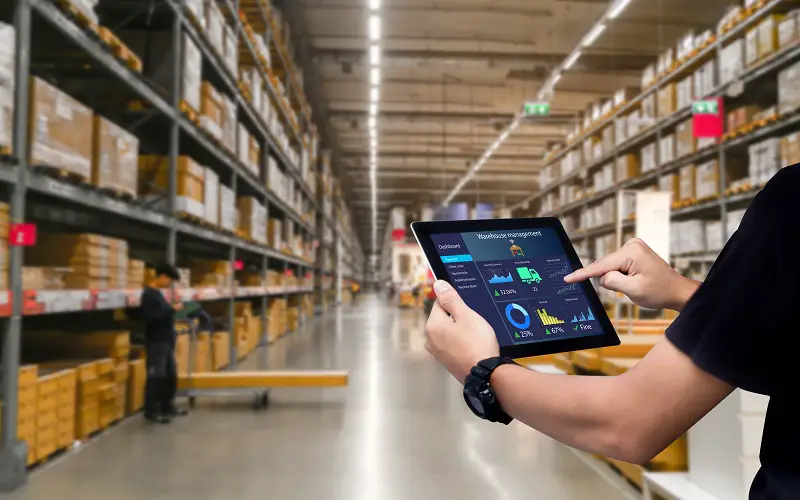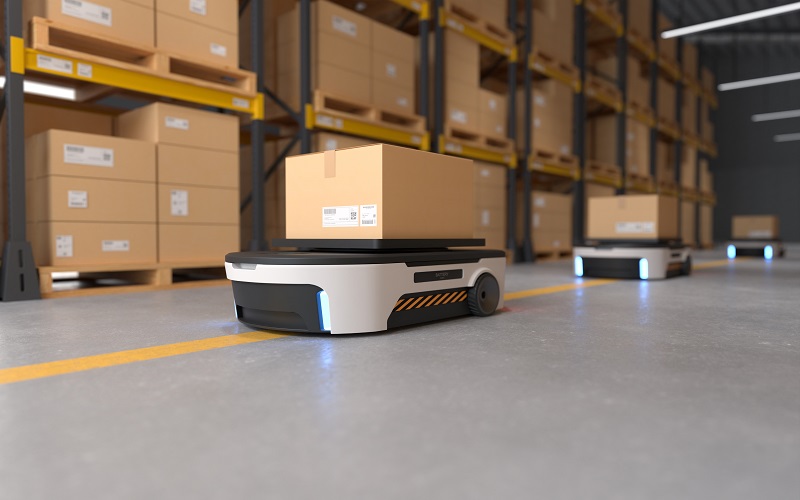If you are looking for a way to boost the productivity of your warehouse, there is no better solution than using warehouse automation. For one, it can allow workers to focus on other functions instead of wasting time on mundane tasks like moving products from one place to another. Aside from that, you can gain a higher return on investment (ROI) by eliminating repetitive warehouse tasks.
That said, below are tips and techniques that can help you get started with this type of technology, boost your operations, and streamline warehouse functions:
1. Use Smart Robots
Smart robots are among the many technological advancements you can leverage in your warehouse management. Unlike human employees, they don’t need regular training sessions to ensure they’re up to date with processes or tasks. Instead, they can be programmed to perform mundane tasks or multiple functions in a single shift.
That said, you can invest and install a robot system to ensure speed and safety when carrying out warehouse management tasks. And due to the programmable and automation features of such innovation, you can also promote accuracy and consistency within your organization. Essentially, this can help improve your overall efficiency and productivity by several folds.
2. Leverage RFID Tags
Radiofrequency identification (RFID) technology is one of the most effective tools for inventory tracking, but not all RFID tags are created equal. The best ones will be made with durable materials that can withstand various weather conditions and temperatures, which means they won’t break or stop working when exposed to extreme heat or cold.
You also want to look for tags designed for long-term use so they don’t fail prematurely, especially if you’re using them in high-volume areas with a lot of foot traffic. For instance, opt for a tag that has an adhesive backing instead of one that requires adhesive tape because these types of tags will last longer before needing replacement.
3. Invest In Computerized Material Handling Equipment
Computerized material handling equipment uses computers and software to automatically move materials throughout the warehouse using conveyor belts, vertical elevators, and other mechanisms (such as forklifts). This, combined with RFID tags or barcode scanners, work together to ensure that products are correctly stored, sorted, packed, and shipped according to their destination specifications.

Consider whether you want open-loop or closed-loop systems when looking for computerized material handling equipment. Open-loop systems require constant human supervision, whereas closed-loop systems operate autonomously under the direction of a computer program. Closed-loop systems are generally more expensive than open-loop systems but can save time and money by reducing the need for human oversight.
4. Get An Inventory Management System
One way you can improve warehouse productivity is by getting an inventory management system. This will allow you to automatically keep track of all your products and their locations instead of doing the task manually. You can use then use the information you get from the system to ensure stocks are available when needed, helping you minimize waste and improve efficiency.
When selecting an inventory management system, it’s essential to consider how much time the system will save you and how much money it will cost. It’s also important to consider how easy it is for employees to use and whether it can be integrated with other systems already in place at your company (such as point-of-sale systems). Finally, consider how scalable such a system might be if you grow or need more functionality.
5. Install A Warehouse Management System
Another essential tool you can invest in is a warehouse management system (WMS). Essentially, it’s an automated software program designed for use by warehouses and distribution centers. These systems can be used for various purposes, including inventory tracking and management and order fulfillment processes such as picking orders from shelves or packing orders into boxes.
When choosing a warehouse management system, it is essential to understand what you are trying to accomplish with your warehouse automation project. For example, if you aim to reduce error rates in tracking inventories while increasing worker productivity, you should consider a shrink-wrap label printer or barcode scanner system.
6. Pay Attention To Maintenance
As you choose a warehouse automation system, you must also pay attention to the maintenance it requires. As with any other technology and equipment, you’ll have to ensure it’s in good working order to maximize its benefits.
For example, without proper system management and maintenance, you could risk the chances of downtime in your warehouse operations. In such a case, inventory tracking and shipping of items could get delayed, resulting in poor delivery and customer service.
For optimum results, it’d be best to hire a professional company to manage your equipment and automation system needs — from installing new updates to maintaining them after they’re up and running. This can help ensure everything is working correctly and that nothing breaks down unexpectedly in the middle of your operations.
Key Takeaway
Increased ROI from inventory control and labor productivity are just two of the many benefits of warehouse automation. However, there’s no need to overhaul your current operations to realize these benefits ultimately. Consider minor, incremental improvements to determine which technologies work best for your business model. You might be surprised about what a little technology can do for your warehouse management and overall business operations.




